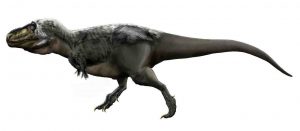
No other animal on land is faster than a cheetah — the elephant is indeed larger, but slower. For small to medium-sized animals, larger also means faster, but for really large animals, when it comes to speed, everything goes downhill again. For the first time, it is now possible to describe how this parabola-like relationship between body size and speed comes about. A research team under the direction of the German Centre for Integrative Biodiversity Research (iDiv) and the Friedrich Schiller University Jena (Germany) have managed to do so thanks to a new mathematical model, and also published their findings in the journal Nature Ecology and Evolution.
A beetle is slower than a mouse, which is slower than a rabbit, which is slower than a cheetah… which is slower than an elephant? No! No other animal on land is faster than a cheetah — the elephant is indeed larger, but slower. For small to medium-sized animals, larger also means faster, but for really large animals, when it comes to speed, everything goes downhill again. For the first time, it is now possible to describe how this parabola-like relationship between body size and speed comes about.
The model is amazingly simple: The only information that it must be ‘fed’ with is the weight of a particular animal as well as the medium it moves in, so either land, air or water. On this basis alone, it calculates the maximum speed that an animal can reach with almost 90% accuracy. “The best feature of our model is that it is universally applicable,” says the lead author of the study, Myriam Hirt of the iDiv research centre and the University of Jena. “It can be performed for all body sizes of animals, from mites to blue whales, with all means of locomotion, from running and swimming to flying, and can be applied in all habitats.” Moreover, the model is by no means limited to animal species that currently exist, but can be applied equally well to extinct species.
Tyrannosaurus reached a speed of only 17 miles/hour
“To test whether we can use our model to calculate the maximum speed of animals that are already extinct, we have applied it to dinosaur species, whose speed has up to now been simulated using highly complex biomechanical processes,” explains Hirt. The result is that the simple model delivered results for Triceratops, Tyrannosaurus, Brachiosaurus and others that matched those from complex simulations — and were not exactly record-breaking for Tyrannosaurus, who reached a speed of only 27 km/h (17 mi/h). “This means that in future, our model will enable us to estimate, in a very simple way, how fast other extinct animals were able to run,” says the scientist.
Mass has to overcome inertia
Two assumptions are the basis of the model. The first assumption is related on the fact that animals reach their maximum speeds during comparatively short sprints, and not while running over long distances. Unlike running over longer distances, where the body constantly resupplies the muscles with energy (aerobic metabolism), sprinting uses energy that is stored in the muscles themselves but which is exhausted relatively quickly (anaerobic metabolism). It seems logical enough: the larger the animal, the more muscle it has — and thus the faster it can sprint. However, Newton’s laws of motion also apply in the animal kingdom, we know mass has to overcome inertia, and so a five-tonne African elephant simply cannot start moving as quickly as a 2.5-gramme Etruscan shrew. By the time large animals such as the elephant get up to full speed while sprinting, their rapidly available energy reserves also soon run out. Taken together, these two assumptions result in the previously mentioned curve: A beetle is slower than a mouse, which is slower than a rabbit, which is slower than a cheetah — which is faster than an elephant.
Reference:
Myriam R. Hirt, Walter Jetz, Björn C. Rall, Ulrich Brose. A general scaling law reveals why the largest animals are not the fastest. Nature Ecology & Evolution, 2017; DOI: 10.1038/s41559-017-0241-4
Note: The above post is reprinted from materials provided by Friedrich Schiller University Jena.










